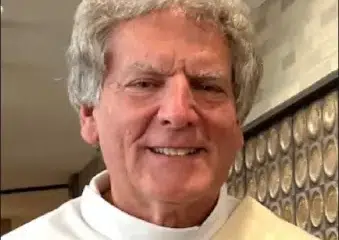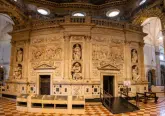Santiago de Compostela Cathedral reopens to pilgrims
by Courtney Mares
Rome Newsroom, Jul 1, 2020 / 08:00 am MT (CNA).- Pilgrims can walk the Camino de Santiago once again as the pilgrimage’s destination, the Cathedral of Santiago de Compostela, reopened its doors Wednesday.
The cathedral, pilgrim welcome center, and public hostels along the Spanish pilgrimage route reopened on July 1 following a more than three-month closure due to the coronavirus pandemic.
Masses resumed at the Cathedral of Santiago de Compostela for up to 75 people at a time to facilitate social distancing requirements. The tomb of St. James the Apostle is now open for veneration from 9 a.m. to 7 p.m. each day, however the traditional embrace of the statue of St. James has been prohibited.
The July 1 reopening coincided with the European Union’s decision to allow tourists to visit its 27 member states from 14 countries, including Canada, Australia, and South Korea, but excluding the United States.
The Camino de Santiago, or “Way of St. James,” is an ancient pilgrimage route that typically draws hundreds of thousands of international pilgrims each year. The “camino” consists of a network for trails across Europe leading to the tomb of St. James in Spain.
St. James, the brother of John the Evangelist, was the first apostle to be martyred. He was beheaded by order of Herod of Agrippa. He is the patron saint of pilgrims and of Spain.
Pilgrims have been making the journey to Santiago de Compostela for more than a thousand years to commemorate the life and sacrifice of the apostle. Although it is a religious pilgrimage, many non-believers also have made the trek.
To complete the Camino de Santiago officially pilgrims are required to complete at least 100 kilometers, or about 62 miles. The most popular route begins in France and crosses into Spain.
The Santiago Cathedral museum has also reopened and offers tours of the cathedral’s 16th-century cloisters.













